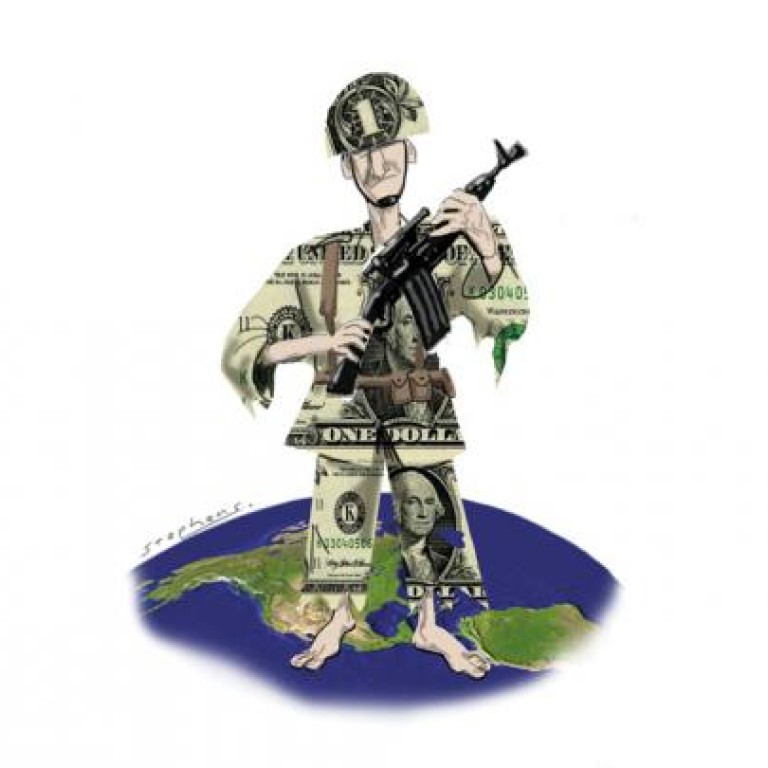
Military the weakest link in US 'pivot' to Asia
Trefor Moss says Washington's 'pivot' to Asia is more about diplomacy and trade than military dominance, given that the US is struggling to maintain its current presence and defence cuts threaten its new ambitions
Worried about the rise of China? Anxious about the disappearance of the world you know? Fear not. Uncle Sam has a plan. The "pivot" to Asia - the United States' historic shift in emphasis from the Atlantic to the Pacific - has been in motion for a year now.
The US' goal is to stress-proof the Asia-Pacific region, to enable it to bend but not break under the strain of rapid geopolitical change. This can be done, the Obama administration reckons, by revamping America's regional presence (military and otherwise) and sending out a strong signal that America will remain the Pacific's pre-eminent power. The economic and security benefits of the rebalancing would then be felt both in the US and Asia.
While the pivot is a cross-government plan with many dimensions, its military element has received the most attention. This is unfortunate because the military aspect is the pivot's weak point. It's also dangerous, because the US risks deceiving its allies and deluding itself about what the pivot in its military guise can realistically achieve.
Faced with the rise of China as a military power, many Asian countries have enthusiastically endorsed Washington's plans, favouring the US system they know over the Chinese system they don't. Australia, the Philippines and Singapore are among those keen to help Washington deliver what Leon Panetta, the US defence secretary, has couched as "enhanced presence, power projection and deterrence in the Asia-Pacific".
It all sounds very reassuring. But the strategy itself isn't the problem. The crux is whether the US retains the dynamism and material resources needed to deliver the enhanced Asia-Pacific security that its Asian friends are hoping for. What they will find, to their great disappointment, is a worrying disconnect between the US' growing military ambitions in Asia and its diminishing power to realise them.
Militarily, the US is doing what it can: marines are being deployed to Australia, and several small navy ships will be based in Singapore. But these are modest changes - not the large-scale deployments that would alter Asia's strategic landscape.
Right now, they are all America can afford. After a free-wheeling decade of wars and blank cheques, the US military is entering a cycle of bruising cutbacks, not global expansion. Around US$500 billion has already been sliced from the Pentagon's budget over the next decade as the federal government faces up to its debts. Under the axe are 70,000 troops, hundreds of aircraft and more than a dozen naval ships. The US navy, whose expansion was to have enabled the pivot, is set to shrink as ship-building programmes are stretched to save money.
Now, like a masochist warming to the first lashings of pain, Washington seems determined to visit further damage on itself, as President Barack Obama and senior Republicans bang heads over the 2013 federal budget. If they fail to reach a deal, they will in early January tip the country over the "fiscal cliff", triggering a second round of deep budget cuts. For the Defence Department, this exercise in national self-harm will mean a second US$500 billion hit.
These extra cuts, if they happen, will hardly shatter the US military's world. The Pentagon is planning a raft of creative cost-saving measures to spare the front line, like forcing civilian staff to take unpaid leave. Overall, US defence spending over the decade would shrink from around US$6 trillion to US$5 trillion. That's still a huge allocation.
And yet, the loss of US$1 trillion hardly prepares the ground for an Asian build-up sufficient to change the global game. Nor does it reassure your allies or deter your competitors. Deputy Secretary of Defence Ashton Carter recently insisted that the pivot would still be militarily meaningful: 70,000 additional US soldiers could be stationed in the Asia-Pacific, he revealed. But where these troops might go, and whether the US could even afford to deploy them if confronted by the extra cuts, remains moot.
Where the US really is ramping up its efforts in Asia is diplomacy and trade - the things that don't cost very much.
In particular, Washington is forging ahead with the Trans-Pacific Partnership, a new free-trade agreement involving eight other countries on either side of the Pacific. Others, perhaps China, could join later. Critics of the pivot's military emphasis think Obama should have pursued a strategy of economic engagement all along; a military build-up will only antagonise China, they argue, while expanding free trade will promote stability and prosperity.
The pivot to Asia, it's now clear, is a primarily political and economic exercise. Maybe that's the right approach, anyway.
But let's end the confusion about the pivot's military import. The US isn't really pivoting to Asia militarily: it's struggling to maintain the presence it already has here. To pretend otherwise would be for Washington to take China's rising-power formula - "hide your strength, and bide your time" - and turn it upside down, muttering "exaggerate your strength, and do it now" behind its own hand. That would be the mantra of a power in decline.
The US can remain a force in Asia. But it's no good denying that US military power in Asia has already reached its high-water mark.
